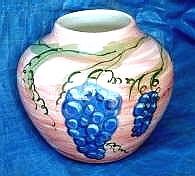Clay slip is clay with additives to make it pourable.
To explain how slip forms into greenware which is then fired to create bisque:the plaster used to make the ceramic molds, has what is called 'channels'.
The channels are formed as the plaster is setting up. It is these channels that make slip casting possible.When the slip is poured into a mold, the moisture against the plaster begins to draw completely through the mold, via these 'channels'.
Since this action is only affecting the slip that lies against the mold, a thick shell of clay begins to form and it grows thicker as long as the slip is in the mold. When that shell is thick enough, the pourer then dumps out the slip, stopping the shell from getting wider (thicker).
As is the nature of clay, it shrinks as it dries. The pourer will wait until the shell (which is the future greenware) has drawn away from the inside surface of the mold (as it shrinks), then open the mold and allow the greenware to harden just enough to be handled.
Then the greenware can be lifted out, popped out,dumped out and set on a shelf to dry.Not much mystery there.
http://judysbookshop.com/pouring-for-ceramics.htm
Adjust contrast of a pdf free
-
Closer to the eye of the shooter, this is because Preview is quite
literally applying a filter to each individual page of the PDF you are
saving. the proce...






No comments:
Post a Comment